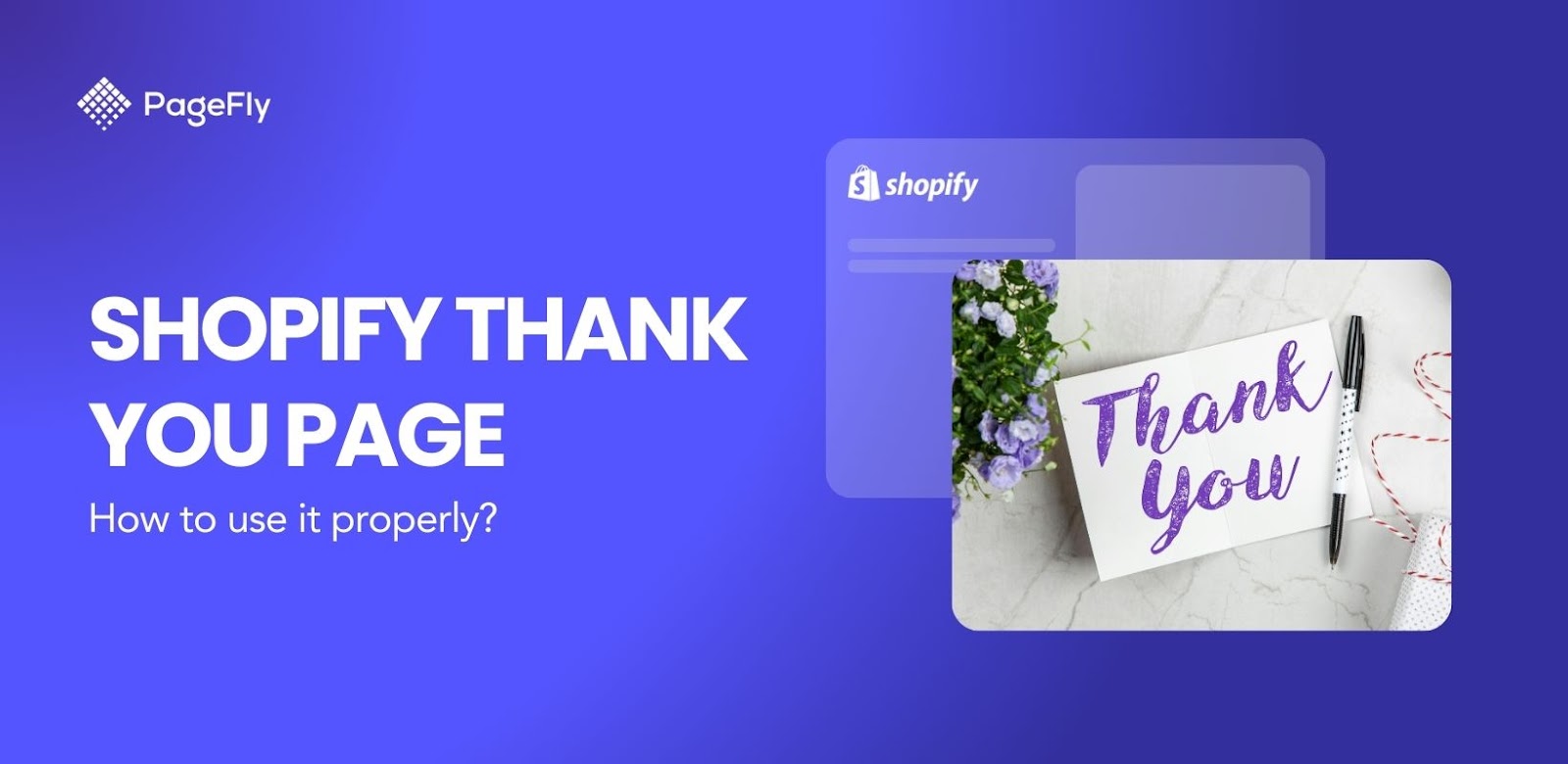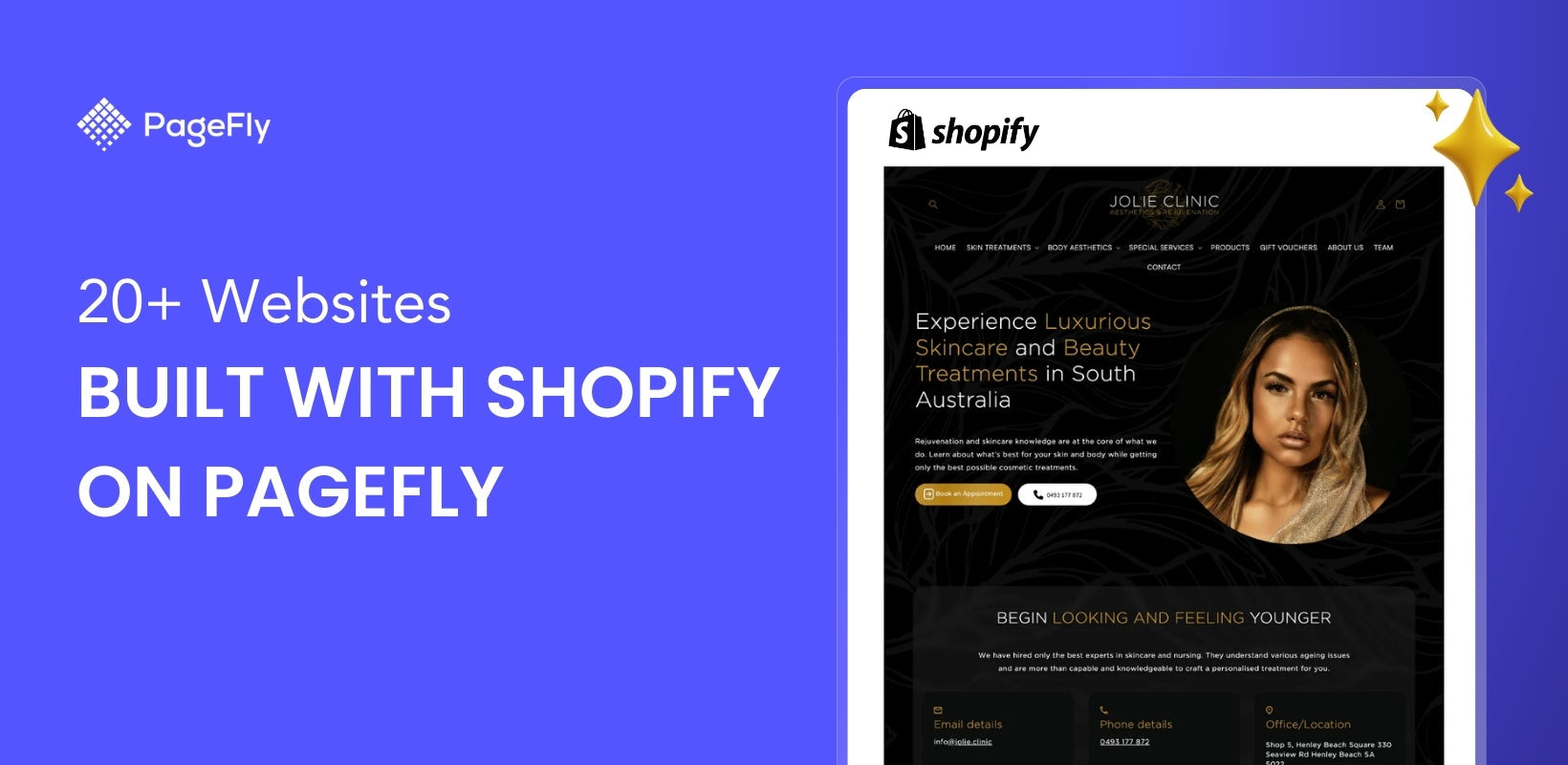Shopify collection page is crucial for building a sustainable, profitable store. While product pages drive conversions, collection pages, along with other key pages like "About Us" and "Coming Soon," help create a seamless shopping experience.
With proper optimization, a collection page design can drive organic traffic and boost sales. With tools like Shopify Page Builder and PageFly, merchants can design custom Shopify pages effortlessly. These tools provide intuitive drag-and-drop functionality, empowering users to create visually appealing collection pages and product displays without requiring coding expertise.
What is a Shopify Collection Page?
A Shopify Collection Page is a curated grouping of products displayed together based on specific criteria such as product type, theme, season, or sale. These pages allow store owners to organize their inventory, making it easier for customers to browse related products. Examples of collection pages include categories like "Summer Sale," "New Arrivals," "Best Sellers," or "Sale Items."
The benefit of collection pages lies in their ability to complement the Shopify product page customization by driving targeted traffic, improving user navigation, and increasing sales. Together, they create a cohesive shopping experience where customers can seamlessly transition from browsing collections to detailed product views. For instance, a fashion store might have a collection page dedicated to "Winter Coats," showcasing all their available styles, colors, and sizes.
In this article, we will explore various collection page examples, guide you on how to add a collection page to your Shopify store, share best practices, and much more to help you optimize your online store.
What Do You Use a Shopify Collection For?
Shopify collections are essential tools for organizing and showcasing products in ways that enhance the shopping experience. Grouping products effectively can streamline navigation, boost conversions, and increase sales.
Additionally, as mentioned, a well-designed Shopify collection page template can support your SEO efforts, making it easier for customers to find products and for search engines to crawl your site.
Examples of collection usage include:
- Targeted Product Groups: Organize products by customer demographics, such as men’s, women’s, or children’s categories.
- Functional Groupings: Create collections for specific needs like pet supplies or furniture.
- Promotional Collections: Showcase seasonal products or event-specific items to drive interest.
Using manual or automated collections can further improve efficiency. By combining these techniques with strong SEO practices, such as optimizing meta descriptions and tags for each collection, you enhance both user experience and search visibility.
7 Innovative Collection Page Examples
To inspire your own collection page design, we’ve compiled examples of some of the best collection page examples built with PageFly—showcasing a perfect blend of design and functionality.
Itsse

Nice neutral color tones work perfectly for cosmetic and beauty stores. Your collection page (or any page for that matter) doesn’t need to be fanciful. Content and credibility are infinitely more important. Products are neatly laid out here and the images are crisp enough to inspire trust. This is a great collection page example
Kinoian

White or light grey backgrounds on product and collection pages are always a good idea, as they align with what most consumers are accustomed to. A clean, simple design fosters trust in your brand. Being too outlandishly different with design typically works only in rare cases, often when the branding is already well established.
Kinoian has a massive range of products, all easily accessible through drop-down menus for precise filtering, making it an excellent Shopify collection page example. For larger inventories, consider implementing a well-structured Shopify all collections page to showcase categories clearly and guide users seamlessly to the products they need. This approach ensures customers can explore your offerings efficiently while maintaining a visually cohesive design.
52 Hike Challenge

Jennybird

I really dig minimal designs like this with large hero imagery. It’s especially important if you’re in a fashion niche to make a visual statement with your photography. Check the drop-down menu and the ‘Pin It’ icon that reveals itself when mousing over each collection. Jennybird demonstrates an impressive PageFly collection page.
Meraki Company

This Shopify collection page uses several tones to separate each section, which helps break up the page. There aren’t really any animations used here - a good call for maximum load speed and search engine optimization (SEO).
I particularly like the fact that their drop-down menus use a combination of text and images.
LockFeet
LockFeet is one of collection page examples that shows a sophisticated use of design to create a seamless shopping experience
It's a wisely calculated juxtaposition of different sections and elements to bring in an image of trustworthiness, professionalism and good craftsmanship - it makes you want to scroll more, and see more.
It starts with a crisp and beautiful Product photo accompanied with strong value propositions. This already-impressive Above The Fold section is then followed with a row of product right below, then it continues to go into more details about the products' benefits
If you scroll down a bit, you will see a FAQ section and a Testimonial section - to clear any doubts online shoppers can have about the product and accelerate their decision making process.

Kylie Cosmetics

This Shopify collection page excels in creating a seamless and visually appealing shopping experience. The page features a clean, minimalistic design consistent with the Kylie Cosmetics brand, emphasizing their signature pink tones.
I particularly like how the high-quality product images not only showcase the lipstick shades but also include swatches and packaging, which give customers a clear idea of what to expect. The inclusion of star ratings on products adds an element of trust and social proof.
What’s especially effective is the use of filters and sorting options, allowing users to quickly find their desired products. This functionality, combined with a mobile-responsive layout, ensures the page is both user-friendly and conversion-focused.
Components of a Shopify Collection Page
A well-optimized Shopify collection page comprises several key components that contribute to an improved user experience, enhanced SEO, and higher conversion rates:
- Category Name: The category name should be concise yet descriptive, including targeted keywords that align with user search queries. This not only helps customers quickly identify what they're looking for but also improves the page's indexing for search engines, boosting discoverability.
- Breadcrumbs: Breadcrumbs enhance navigation by showing the user’s path from the homepage to the collection page. This makes it easy for visitors to backtrack, improving the overall usability of the site.
- Sort Menu and Filters: Sorting options (e.g., by price, popularity, or new arrivals) and filters (such as size, color, and price range) enable customers to quickly narrow down their options based on preferences.
- Product Details: Clear product descriptions, visible pricing, high-quality images, and user-generated content like reviews help build trust with potential buyers. By providing all relevant information upfront, collection pages can reduce bounce rates and increase engagement, ultimately leading to higher conversion rates. Positive reviews, in particular, are known to build consumer confidence and influence purchasing decisions (Source:researchgate.net)..
A Mobile-Dominated Marketplace
Mobile is taking over the world, essentially revolutionizing the way we live, work and play. We’re just so dependent on our phones that we don’t notice how radical the innovations are. We forget that we’re walking around with mini computers in our pockets.
Smartphones transformed the way we shop. So it’s vital that every eCommerce merchant understands its importance and operates their business with the mobile user in mind.
At PageFly, we adopted a mobile-first mentality from day one. When you’re creating pages like the ones featured in this list, you can literally go in and tinker about until the mobile experience is exactly how you want it. But more importantly, how you need it to be to create a high converting Shopify store.
For instance, switching the view from All to Mobile in the PageFly editor will allow you to make much-needed changes to the experience on mobile.
Shopify & PageFly: The Ultimate Combo
Shopify offers a robust foundation for eCommerce, while PageFly elevates it with advanced customization options. Together, they create a powerful synergy that enhances usability and SEO performance.
A well-optimized Shopify collection page template developed using PageFly can help you stay competitive without the need for expensive custom development.
Shopify simplifies eCommerce, while PageFly optimizes it, providing the tools you need to create a high-converting Shopify store without the steep cost of custom development.
It’s a remarkable time to be alive. Thanks to the computer networking revolution, there has never been so many avenues to make your fortune. The difficult part is not knowing which route to take to get there. We love to dabble, dipping our hands into multiple ventures and quitting at the first signs of failure.
But failure is your teacher.
eCommerce is one of many online business models that requires consistency to be successful. Just stick at it. I promise if you keep chipping away, eventually you’ll reach that sweet caramel center.
PageFly vs. Shopify Theme Customization for Collection Page Design
Most page designs aren't achievable with free Shopify themes. While you could purchase a template from third-party sources like Themeforest, customizing a Shopify collection page design often requires coding knowledge, and altering the custom code could disrupt your store’s functionality.
Take the free Shopify Minimal theme as an example. In the editor, options for customizing your logo and navigation are minimal. If you choose to keep the announcement bar, you're limited to predefined settings.
With PageFly, you can easily customize every section without modifying Shopify’s core code. A simple drag-and-drop interface allows you to position elements, such as placing the logo on the right and navigation links on the left, for a design tailored to your store’s needs.
While design is important, content plays a crucial role in driving conversions. In Shopify’s editor, adding extra content to engage users and encourage purchases is limited. With PageFly, you can fully replace the default Shopify collection page, adding custom images, detailed descriptions, and interactive content like product videos and GIFs.
For example, in a bracelets collection, you can use a 2-block layout to add a GIF next to the collection, increasing engagement. To add a product video, simply drag the Video HTML element onto the page and upload your file.
When it comes to collection page design, the focus should be on creating a page that is both visually appealing and functional.
(Note: Video files must be under 10MB in size.)
How to Add a Collection Page Using Shopify Page Builder - PageFly
Enhancing your Shopify collection page design with additional content can significantly improve user experience and boost your store's performance. PageFly offers a simple yet powerful way to customize and add more content to your Shopify collection pages. Follow these steps to learn how to add a collection page to Shopify using PageFly:
Install and Set Up PageFly

- If you haven't already, install the PageFly app from the Shopify App Store. Once installed, open the app and complete the initial setup process.
Create a New Collection Page

- PageFly offers a variety of templates that you can use to get started quickly. Choose a template that fits your needs or select a blank template to design your page from scratch.
Add and Customize Elements

- Use PageFly’s drag-and-drop editor to add elements to your collection page. You can include text, images, videos, buttons, and more. Customize each element to match your store’s branding and style.
- Text: Add descriptive text to highlight your collection’s unique features.
- Images: Include high-quality images to showcase your products.
- Buttons: Add call-to-action buttons to encourage visitors to explore more or make a purchase.
Configure Collection Settings
- To ensure your collection page displays the correct products, configure the collection settings. Select the collection you want to display from your Shopify store and adjust any additional settings, such as sorting options and filters.
Optimize for SEO
- Enhance your page’s SEO by adding meta titles, descriptions, and keywords. This will help improve your collection page’s visibility in search engine results.
Preview and Publish
- Before publishing, preview your collection page to ensure everything looks perfect. Make any necessary adjustments, then click the “Publish” button to make your new collection page live on your Shopify store.
Integrate with Your Store Navigation
- Add your new collection page to your store’s navigation menu so customers can easily find it. Go to your Shopify admin dashboard, navigate to "Online Store" > "Navigation," and add the new collection page link to your desired menu. Make sure your Shopify all collections page is prominently displayed for visitors to find all your categories at a glance.
By following these steps, you can effectively add a collection page to shopify. This added content can enhance the user experience, improve your SEO, and ultimately drive more sales.
You can also watch this tutorial on how to create a custom collection page with PageFly:
Shopify Collection Pages built by PageFly App
Creating a visually appealing and functional Shopify collection page design is crucial for any e-commerce store, and the PageFly App makes this process simple and customizable. With its drag-and-drop editor and powerful features, you can design collection pages that not only enhance user experience but also improve your store’s performance and SEO.
Renegade GK

Big Bertha Original

Kaiko

Key Features of PageFly Collection Pages
- Customizable Layouts: PageFly offers a variety of pre-designed templates that you can modify to match your store’s style, making it easier to create aesthetically pleasing collection pages.
- Advanced Filters and Sorting Options: Add powerful product filters for customers to sort by price, size, color, and more, making it easier for them to find what they’re looking for.
- Mobile-Responsive Design: PageFly ensures your collection pages look great on all devices, helping to improve conversions across desktop, tablet, and mobile users.
- Drag-and-Drop Functionality: With an intuitive interface, PageFly lets you design collection pages without any coding experience, making it accessible for both beginners and seasoned store owners.
Best Practices for Shopify Collection Pages
Customizing your Shopify collection pages can significantly enhance the shopping experience, boost engagement, and increase conversions. Below are some essential tips to optimize your Shopify collection pages:
- Use High-Quality Images - High-quality images are vital for showcasing your products. Ensure they are clear, professionally taken, and optimized for fast loading times. Consistent image sizes across your pages create a cohesive look and improve user experience. A total of 90% of people shopping and scanning online believe that image quality is the top priority when buying or looking at something (source: businessdasher.com).
- Add Engaging Titles and Descriptions - Craft compelling, keyword-rich titles and descriptions for your collections and individual products. This not only improves SEO but also provides customers with the information they need to make informed decisions. Tools like Google Keyword Planner can help you identify relevant terms to include, such as optimizing your Shopify all collections page for better search engine performance.
- Implement Filtering and Sorting Options - Enhance the shopping experience by adding filtering and sorting options. Allow customers to filter by size, color, price, and other attributes, and offer sorting options like "Newest," "Price: Low to High," and "Best Selling." This can help customers find products quickly, improving user satisfaction and conversion rates.
- Incorporate Customer Reviews and Ratings - Display customer reviews and ratings directly on your collection pages. Positive reviews build trust and credibility, influencing purchasing decisions.
- Add Call-to-Action Buttons Use clear and compelling call-to-action (CTA) buttons to guide customers toward making a purchase. Phrases like "Shop Now," "View More," and "Add to Cart" can help increase conversions.
- Optimize for Mobile Ensure that your collection pages are fully responsive and optimized for mobile devices. A significant portion of e-commerce traffic comes from mobile users—mobile e-commerce sales totaled $2.2 trillion in 2023, accounting for 60% of global e-commerce sales (statista.com).
- Leverage Social Proof Add elements like "Trending," "Popular," or "Best Seller" tags to indicate social proof. These elements encourage customers to explore and purchase products that are popular among other shoppers.
- Highlight Promotions and Discounts Make ongoing promotions, discounts, and special offers prominent on your collection pages. Use banners, badges, or pop-ups to draw attention to these deals, encouraging customers to take action.
- Improve Page Speed of your collection pages for faster load times. Compress images, use a content delivery network (CDN), and minimize heavy scripts to ensure your page loads quickly.
Conclusion
Shopify collection pages are essential for creating a seamless eCommerce experience. By organizing products into relevant categories, these pages improve navigation, enhance user experience, and drive organic traffic. Taking inspiration from collection page examples can help you design visually appealing, functional pages that align with your brand.
If you're unsure how to add a collection page, tools like PageFly make it easy to create customized collection pages that fit your store’s needs. A well-crafted Shopify collection page template, paired with strategic principles, can boost your store's visibility and conversions, keeping it competitive in the dynamic eCommerce market.

















